Note: since then, I posted an interesting note here.
Venice has a large number of swords, be it sideswords, broadswords, basket-hilt swords and longswords that have a certain aesthetic not found anywhere else outside the Venetian area of influence. This loose style is sometimes referred to as the Schiavonesca style, in reference to the Slavic influence from the Dalmatian coast of the Balkan peninsula, who contributed to the Venetian martial culture. At the same time, Venice is known for its arsenals that represent some of the first examples of mass production, naturally, in accordance with the technology of those times.
As a result of these two aspects, we find a 15th century standard for an infantry sword coming out of Venice. A large number of these swords are kept in the Armoury of the Doges Palace, Venice, and a few are housed in the Kunsthistorisches Museum in Vienna.
They have a broad straight double-edged blade, with a hexagonal cross-profile and triple fullers that transition to a pronounced flat section. We see three small maker’s marks stamped within the central fuller. The leather grip is imprinted sometimes with a Fleur de Lys motive. The swords have a rectangular, close to square but not quite, pommel in the Schiavonesca style. The knuckle bow is flat, the finger ring looks substantial in thickness and the bottom quillon is absent. The top quillon is spatulated and curved forwards, presenting also an additional spike. Some people proposed the idea that the spike was used to bind the opponent’s blade. As see the prospect as undesirable, and I favour the more practical theory, that the role of the spike was to secure the sword in the scabbard, a task not to be ignored on a sword worn by the side as a secondary weapon for most of its life.
Kunsthistorisches Museum
The KHM in Vienna houses at least two of these type of swords:
https://www.khm.at/en/object/373090/
A total length of 105cm and a weight of 1200g are listed by KHM. From the photos, I estimated a grip length of 8cm, a square pommel 4.7cm wide and 4.3cm tall, and a 5cm wide blade that is 91.5cm in length.
https://www.khm.at/en/object/373095/
The total length of 114.4cm is listed by KHM. From the photos, I estimated a grip length of 8.5cm, a square pommel 5cm wide and 4.4cm tall, and a 5cm wide blade that is 100cm in length.
Olympia Auctions
Recently, Olympia Auctions sold a beautiful example of this type of swords for £22,000.
The sword in question is stated to have a 95.3cm long blade. I estimated the width of the blade to be 4.3cm. The sword of 109.3cm in total length has an 8.5cm long grip. The square pommel is 5.5cm wide and 4.9cm tall, once again showing the tendency for a wider pommel. There is no manufacturing reasons for this, inferring that resting the pommel at the back of the hand was the indented use for this sword.

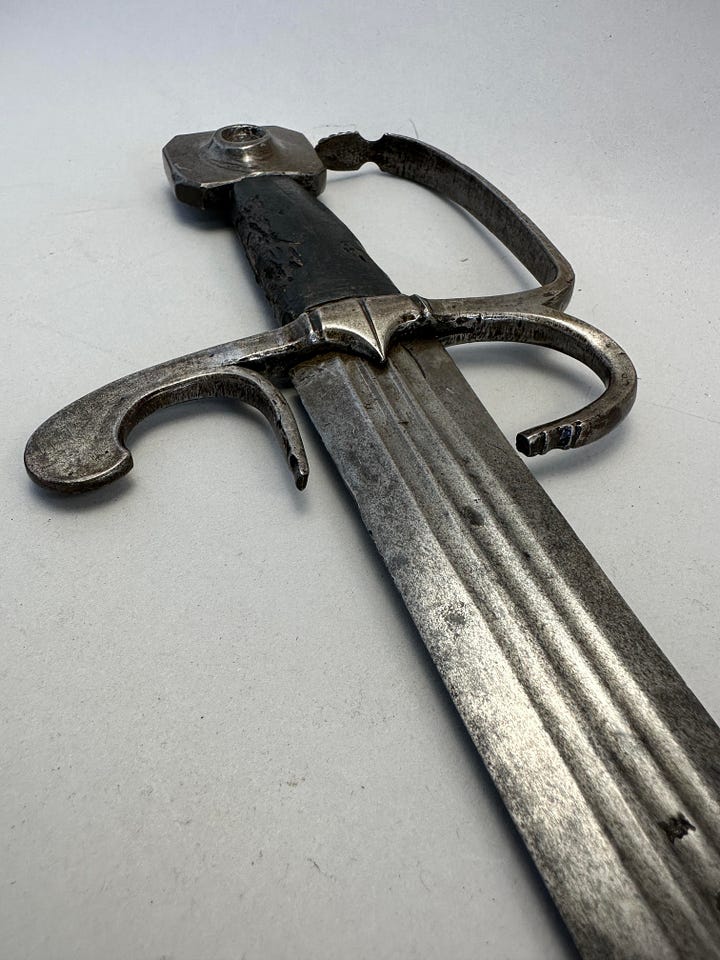





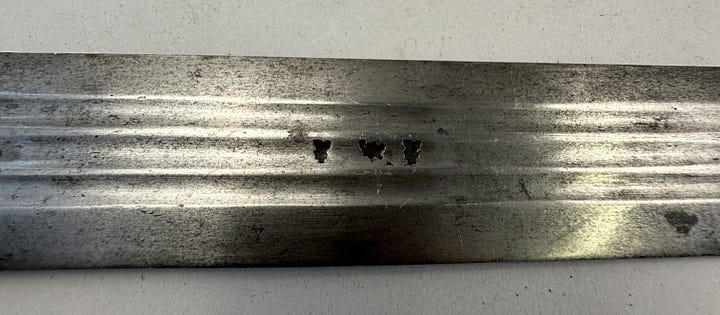

Antiques Armoury
Antiques Armoury antique dealer lists a “Rare Venetian Sword of Doge’s Palace Guards” from c.1480-1490.
This sword, referred to as “spada Da Fanti” was used by the Palace guards of the Doge of Venice and many examples still can be seen in the Ducal Palace collection in Venice.
The rooms of the Armoury contain a valuable historical collection of weapons and armaments from several sources. The core of the collection is already documented as existing in the 14th century; and at the time of the Republic the Armoury, under the control of the Council of Ten, was stocked with weapons that would be readily available for the Palace’s guards. On particularly delicate or important occasions, these guards might be joined by the arsenalotti, the highly-trained workforce from the shipyards of the Arsenale (e.g. when a Doge died, all the gates to the Palace were sealed and placed under the guard of the arsenalotti). Comprising various valuable pieces, the collection of arms was partially dispersed after the fall of the Republic, but it still contains over 2000 exhibits. These include very famous examples of 15th and 16th century suits of armour, along with swords, halberds, quivers and crossbows. These often bear the inscribed or painted monogram CX – for “Council of Ten” – which also appears on the door jambs; further evidence of the might of the Council
This sword likely belonged to a high ranking member of the Guard and is a true fighting sword.
The example has only 92cm in total length, weighs just 700g, and has a blade 77cm long and 4cm wide.
Doge's Palace in Venice
Probably the best source for this type of sword. I am posting photos I found from scouring the internet. Such a beautiful example of early standards in military warfare. However, do notice how much variation there is when it comes to the length of the fullers (and even their numbers, with one having only two fullers), the type of the quillon (one example being straight rather than curved), and the rather rough finish that would make a modern sword collector unhappy with the commissioned work.
Room III. This takes its name from the bust of Francesco Morosini in a niche at the end of the room. A Venetian admiral, Morosini became supreme commander of the Venetian fleet during the 1684-1688 war against the Turks, and his re-conquest of the Peloponnese would lead to him being known as Il Peloponnesiaco. Elected Doge in 1688, Morosini’s military victories were such that he was the only person in the entire history of the Venetian Republic to be honoured with a public monument whilst still alive. This room contains numerous swords, halberds, crossbows and quivers that are either inscribed or painted with the letters CX, initials which also appear on the door jambs – all confirming the extensive power of the Council of X.
The last three photos show this piece next to other similar swords. And while we see some different pommels on some, or we see the square pommel on more conventional sidesword designs, there is a strong style to them that recommands them as Venetian.




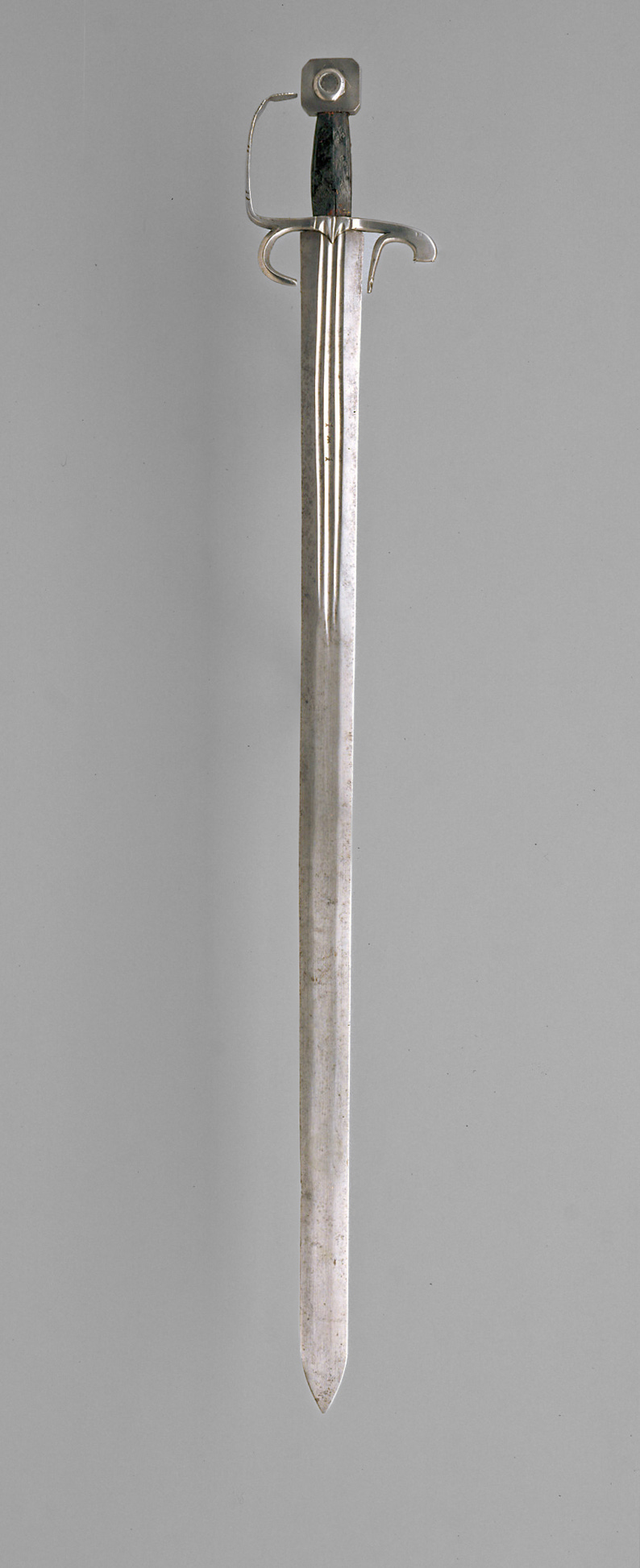
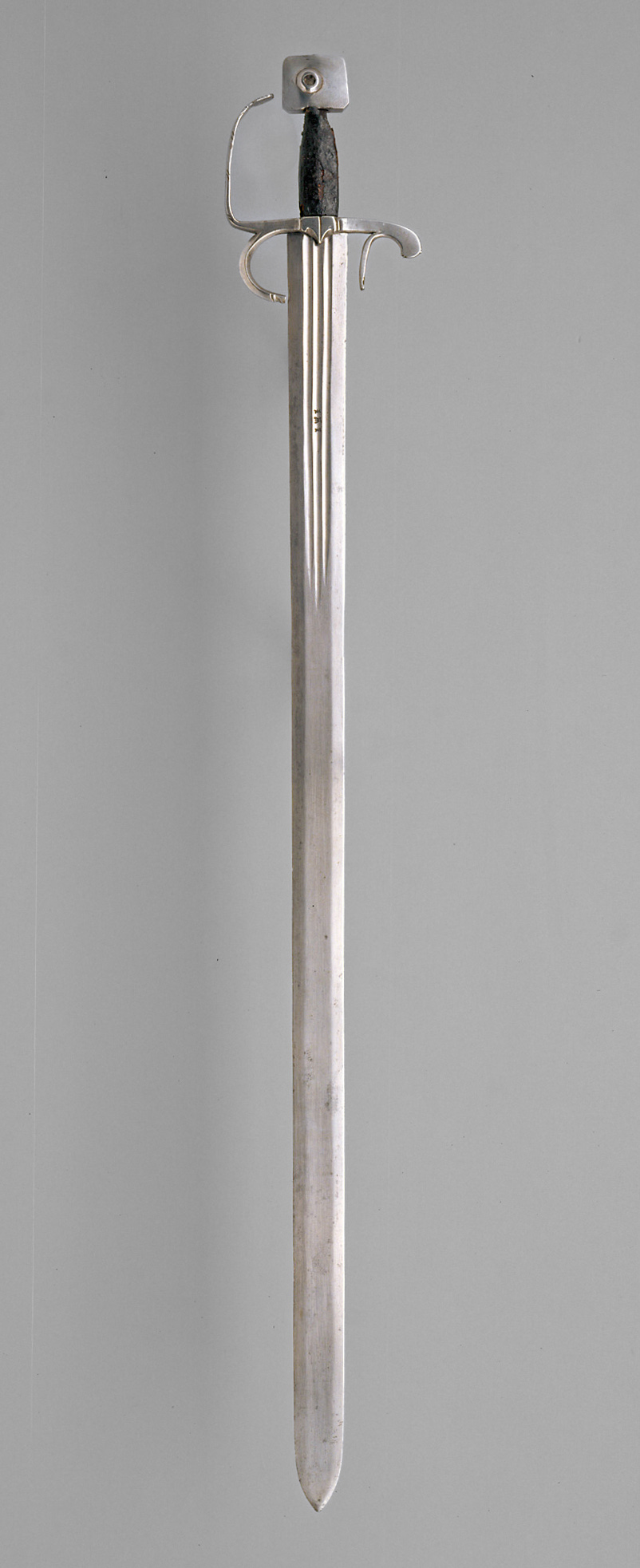
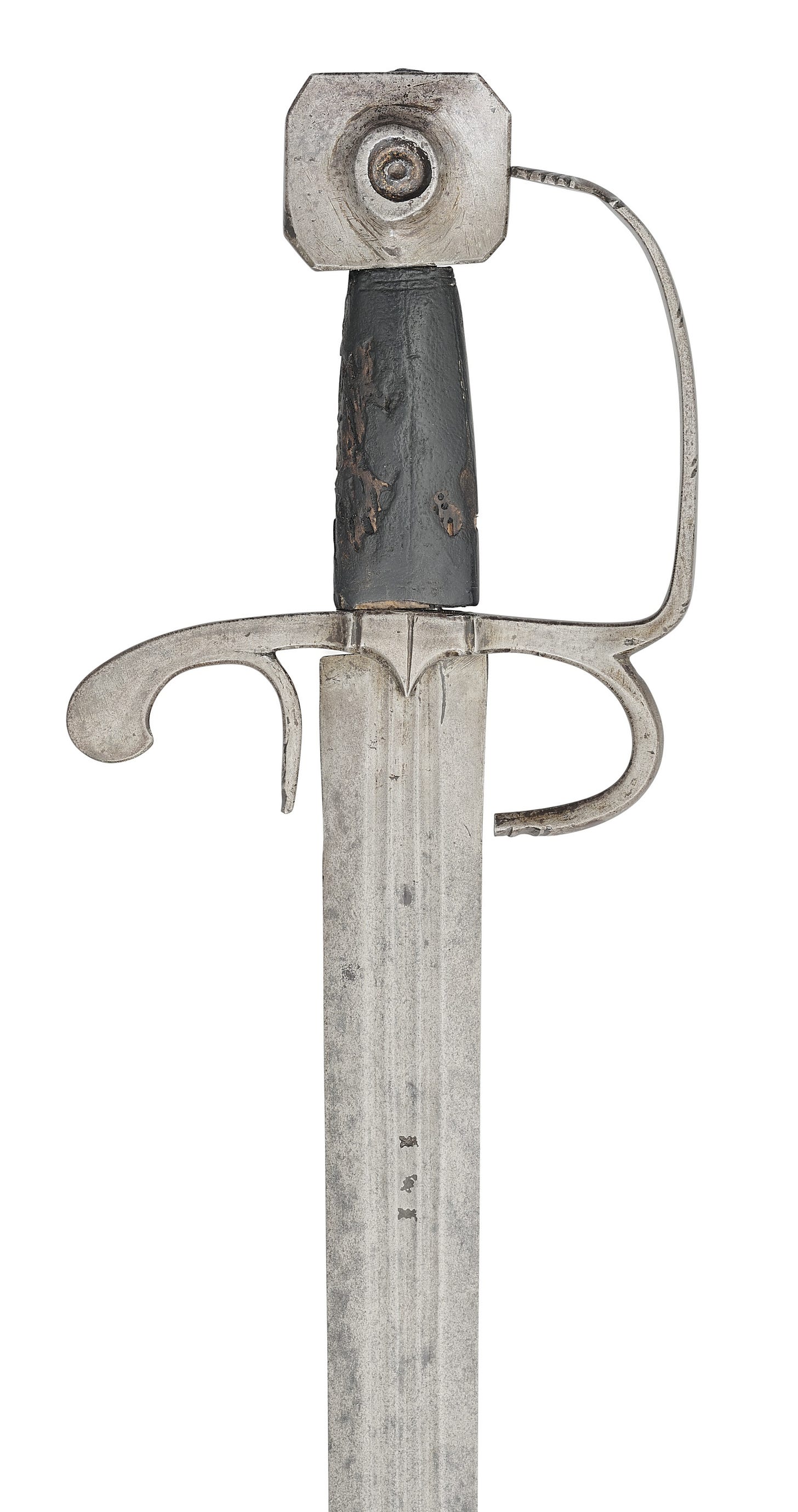




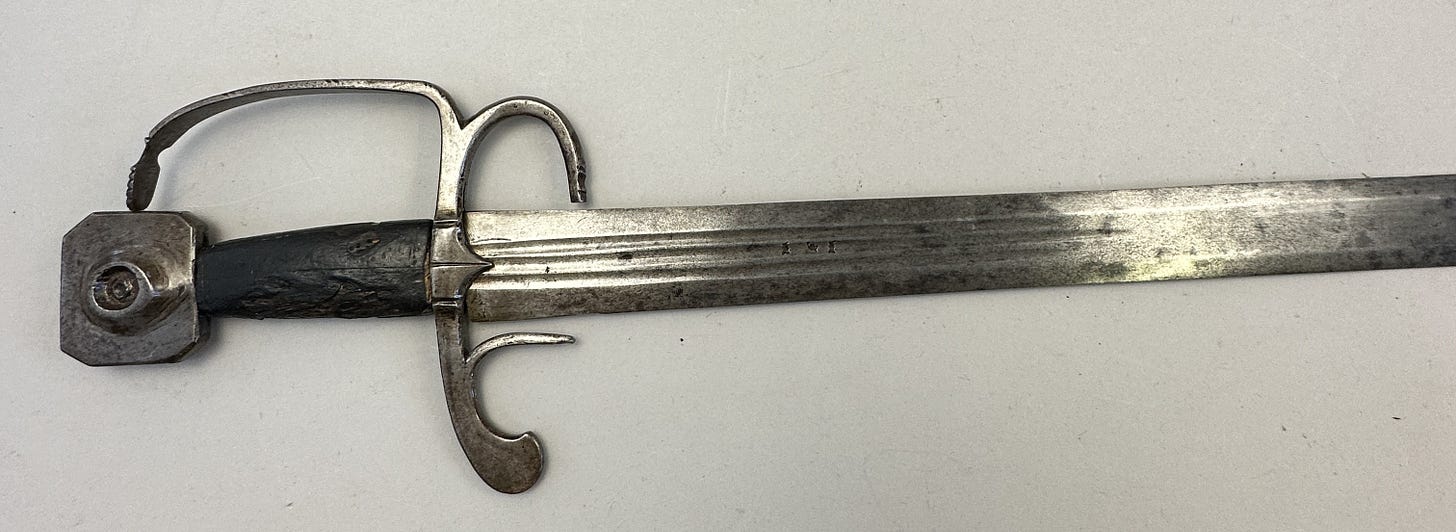

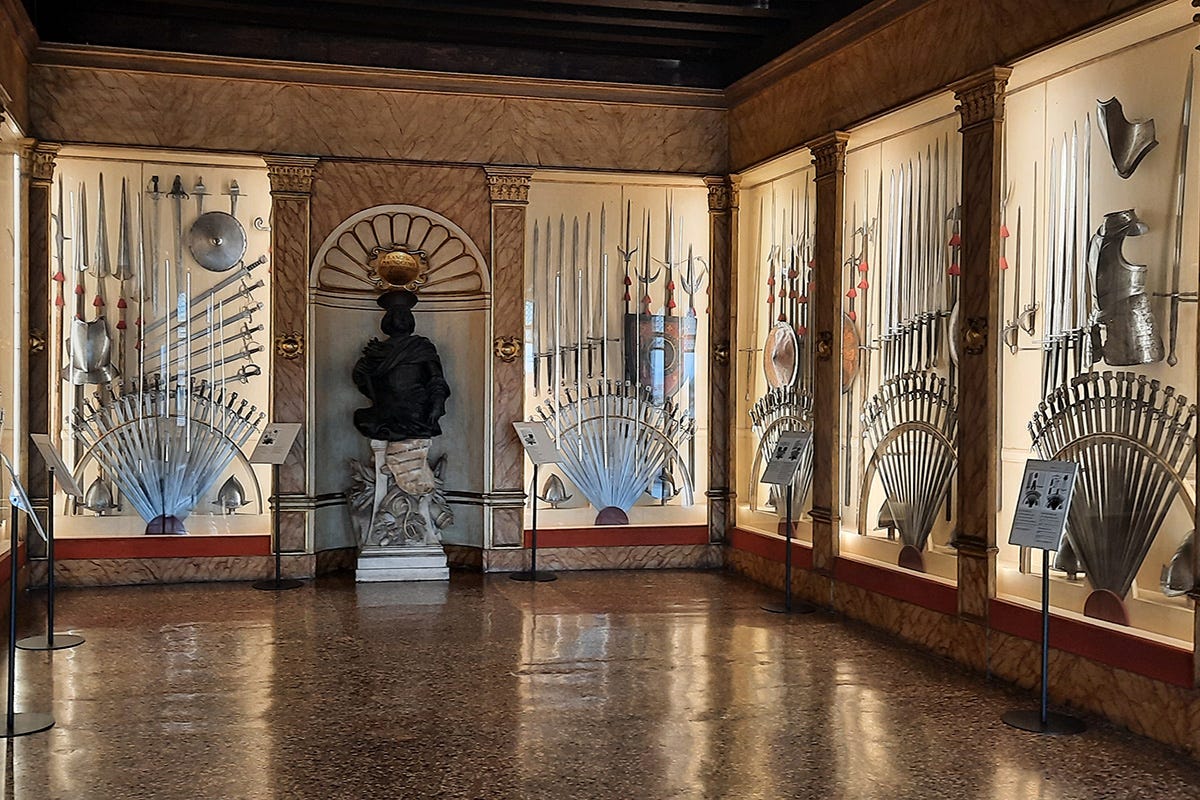


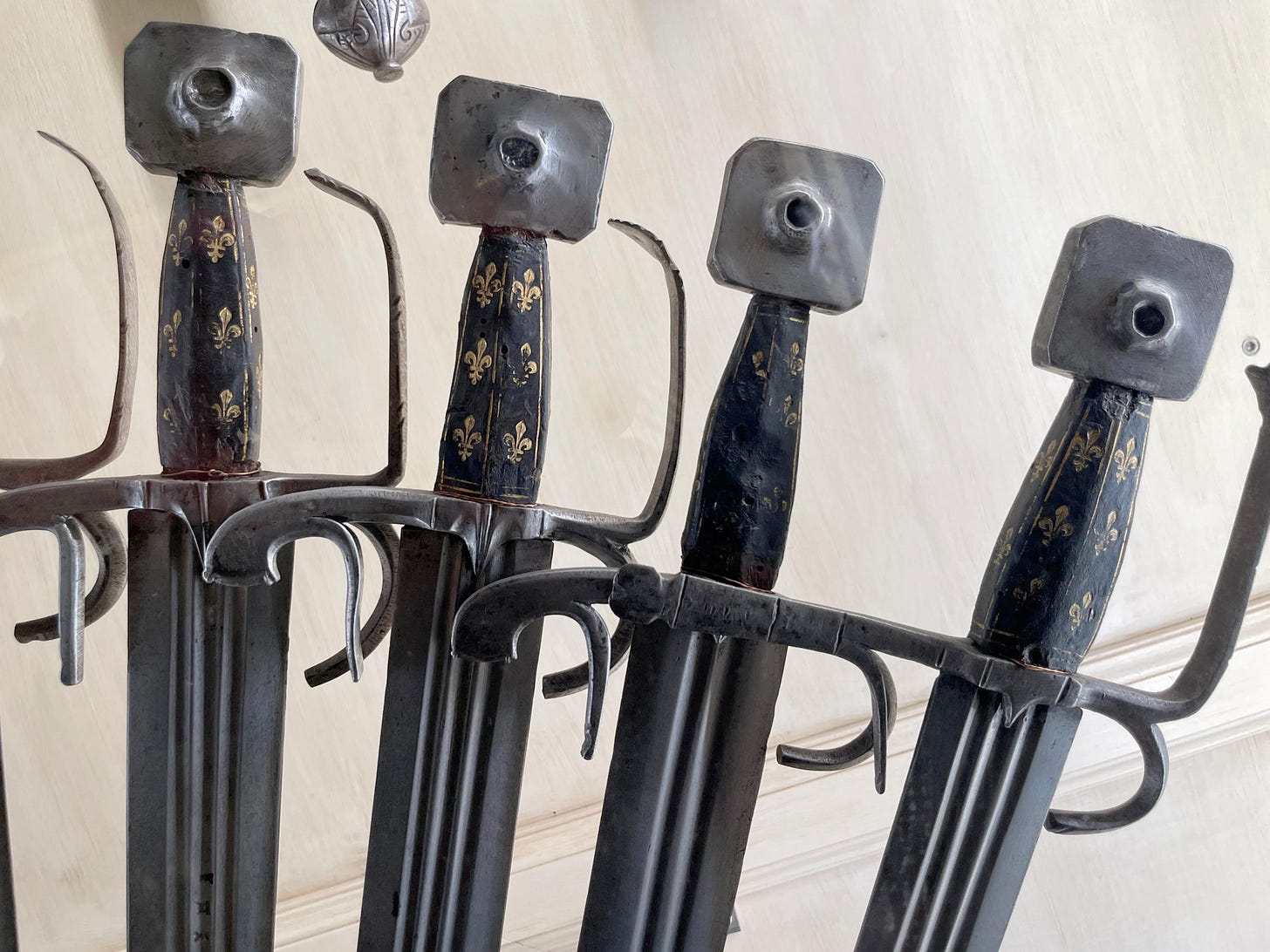


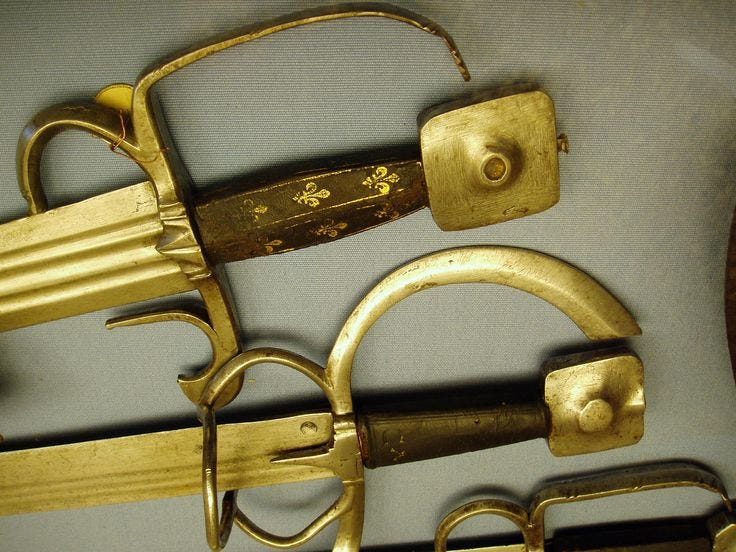
They are interesting swords. What led you to the conclusion that the back bar is for interfacing with a scabbard? It's a new idea to me, my experience has generally indicated it as designed for protecting the back of the hand.